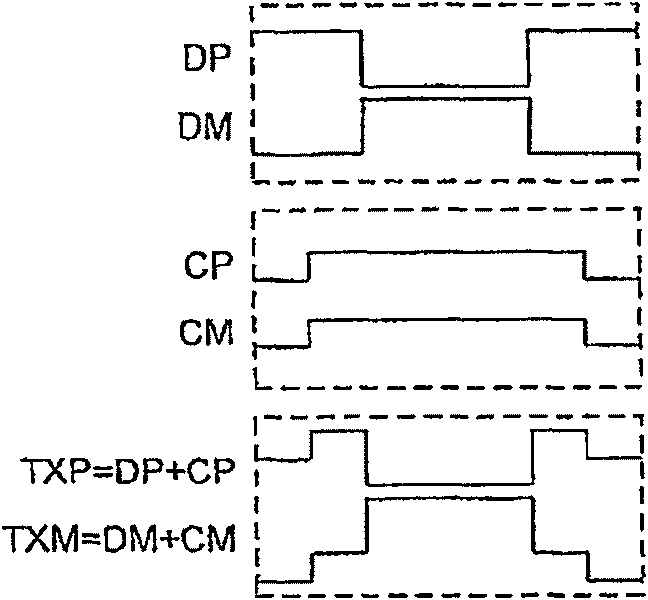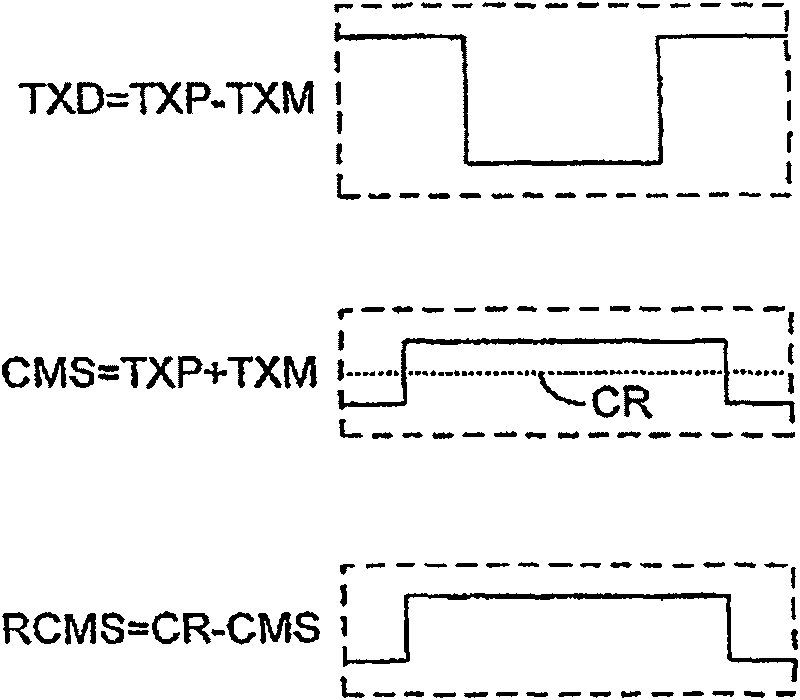Integrated circuit, method for controlling differential signal and communication system
An integrated circuit, differential technology, applied in transmission systems, baseband systems, digital transmission systems, etc., can solve problems such as expensive, reduced forward communication bandwidth, and limited transmission speed.
- Summary
- Abstract
- Description
- Claims
- Application Information
AI Technical Summary
Problems solved by technology
Method used
Image
Examples
Embodiment Construction
[0060] figure 1 A communication system 100 is shown according to one embodiment. As with conventional systems, the system 100 includes a differential transmitter 105 connected to a corresponding differential receiver 107 via a differential communication channel 109 . System 100 also includes reverse channel communication circuitry, common mode transmitter 127 transmits a reverse channel signal synchronized to clock signal TCK to common mode receiver 129 via channel 109 . The high speed differential link between transmitter 105 and receiver 107 is called the "forward channel", while the relatively slower common mode link between transmitter 127 and receiver 129 is called the "reverse channel".
[0061] Various parameters of the differential transmitter 105 should be tuned to achieve and maintain optimum performance. Such tuning affects, for example, on-die termination resistance, drive current, signal swing, equalization (in the transmitter), and phase offset. In addition, f...
PUM
 Login to View More
Login to View More Abstract
Description
Claims
Application Information
 Login to View More
Login to View More - R&D
- Intellectual Property
- Life Sciences
- Materials
- Tech Scout
- Unparalleled Data Quality
- Higher Quality Content
- 60% Fewer Hallucinations
Browse by: Latest US Patents, China's latest patents, Technical Efficacy Thesaurus, Application Domain, Technology Topic, Popular Technical Reports.
© 2025 PatSnap. All rights reserved.Legal|Privacy policy|Modern Slavery Act Transparency Statement|Sitemap|About US| Contact US: help@patsnap.com



